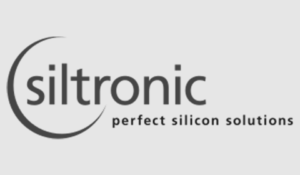Home » Cover Lens

Display screens are usually accompanied by screen covers, which can be roughly divided into two main types: glass covers and printed covers.
Glass covers are mostly touch screens, which are used to realize human-computer interaction functions. Printed covers are used to add additional functions or information outside the screen.
The glass cover is mainly responsible for touch function and screen protection, and is usually made of tempered glass with excellent light transmittance. Tempered glass is known for its high strength and durability, providing strong protection against scratches, impacts and general wear and tear. Even when formed into 3D shapes, it can maintain hardness, making it ideal for a variety of applications as it can minimize the risk of damage.
In common electronic products such as mobile phones and home appliances, the surface of the glass cover is usually coated with additional coatings or special films. These enhancements provide anti-glare, anti-fingerprint and anti-corrosion properties, further improving the user experience and device life. The combination of durability, clarity and additional protection makes tempered glass cover the first choice for high-end consumer electronics.


Printed covers differ from standard glass covers in that they incorporate additional information areas outside the screen, such as touch buttons or instructional text. Printed covers are available in touch and non-touch versions to meet different functional and aesthetic needs.
Touch-printed covers use glass as a substrate, similar to standard glass covers, but include capacitive buttons outside the main screen area. This configuration benefits devices that require secondary touch functionality, such as visual monitoring panels and automotive information screens. These covers combine the durability and clarity of glass with additional functional elements to enhance the overall user interface.
Touchless printed covers can be made from various materials, including low-cost plastics, high-protection metals, and glass to provide advanced aesthetics. These covers do not support touch functionality but are designed to include printed instructions or warnings outside the screen area. This approach reduces the device’s energy consumption by minimizing the touch-sensitive area and enhances visual appeal and information clarity. Touchless printed covers are ideal for applications that value aesthetic quality and clear communication, such as home appliances and industrial equipment.







Touch screen covers are usually paired with high-resolution color screens to give customers a better reading experience and better display of product information. In addition, we can also configure special coatings for the screen for use in special environments. For example, the screen cover used in kitchen appliances should be added with anti-oil and anti-impact covers.
Monochrome segment LCD is the most widely used monochrome display screen at present. They usually appear together with print screens, which can not only display necessary information for customers, but also print some prompts or warnings outside the screen. Print screen cover with monochrome segment LCD is a way that many companies use without reducing the display experience and reducing costs.

In fact, the application scenarios of TFT LCD display modules can cover almost all electronic devices we interact with in daily life. Here are some authoritative considerations to help you understand when to choose a TFT LCD display module:

Touch panels are ideal for products that necessitate intuitive and efficient human-computer interaction, offering a user-friendly interface that simplifies operation for users of all ages and technical backgrounds. By eliminating the need for external peripherals like keyboards and mice, touch panels streamline device design, save space, and provide a sleek, modern aesthetic. This is particularly beneficial in consumer electronics, industrial controls, medical devices, and self-service kiosks, where ease of use and direct interaction are paramount for user satisfaction and operational efficiency.
In addition to enhancing user interaction, touch panels support a range of additional functionalities that extend beyond the screen, such as gesture recognition, haptic feedback, and multi-touch capabilities. They enable dynamic and customizable interfaces that can be easily updated to meet evolving user needs, making them versatile for various applications. Furthermore, touch panels can integrate seamlessly with other technologies like RFID readers, barcode scanners, and payment systems, providing a comprehensive solution for environments requiring multifunctional and efficient interfaces, such as retail, hospitality, and industrial settings.
Cover lenses are applied across a variety of industries and devices to protect touch screens, displays, and sensors, ensuring durability and maintaining optimal functionality.
Talk to our experts to learn more about LCD display modules
If you can’t find the product you are looking for, please contact us and our experts will respond to you within 24 hours and provide you with a more professional solution.


Download our comprehensive catalog to explore 10,000+ LCD module options in detail:
0.42-10.11 inch TFT LCD
16×2-320×240 COB LCD
8×2-320×240 COG LCD